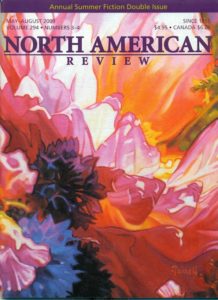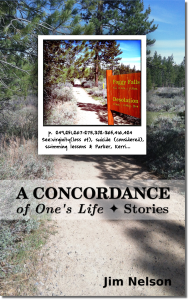Last week, I finished my fourth novel. I used my phone throughout the entire writing process: developing, researching, outlining, plotting, and revision, all the way to my final draft. For all purposes, my phone was my writing notebook for this novel.
I didn’t write the novel on my phone. I’ll probably never do that. When I’m writing I want the full typewriter experience, real keys designed for human hands, the tactile sense physical buttons offer, the whole shebang. And I need a screen display that at least approximates the size of manuscript paper, and not one the size of an index card.
But planning and revising a novel on your phone is certainly possible, and my latest book is proof of that.
In the past I’ve relied on paper-and-ink writing notebooks. A writing notebook is a tool I evangelize to anyone who will listen, mostly because I believe it functions as a kind of “inspiration laboratory” for writers. However, towards the end of my previous novel (Hagar’s Mother) I found myself turning to digital note-taking tools during the editing process.
In the final stretch of editing a novel, a torrent of small details begin erupting. The only way to keep the problems and details organized is with a writing notebook of some manner. When the edits are coming hot and heavy I find removing my hands from the keyboard to be a distraction, so I began using a free note-taking software packaged with my MacBook Air, Apple Notes. Rather than reach for a pen and my trusty notebook, I would ⌘+Tab to Notes and add a bullet point to a little checklist I kept. As I kept working, I would periodically consult my checklist and be sure the appropriate changes were made.
Well, Apple Notes is also available on my iPhone. Thanks to the Internet, at all times my writing notes were synchronized between my computer and my phone. That meant I could review my notes while at work, on the bus, even in bed. It also meant I could add more ideas at any time. Later, when I returned to my computer to resume writing, they were there waiting for me.
That’s the hard reality I faced, one I’m certain other writers face as well: While I sometimes leave the house without my writing notebook, I never leave without my phone. These little devices are simply invaluable to us (which is why I encourage writers to keep them in mind when writing their own fiction).
After Hagar’s Mother, I decided to try an experiment and use Notes as my primary writing notebook for my next novel. I told myself if I had the slightest of problems I would bail out and revert back to my old paper-and-ink notebook. It seemed a risk-free experiment.
Well, I finished my novel and I’m here to tell you: I’m sold. Yes, you can plan, write, and revise your next novel using your phone as a notebook. What’s more, you don’t need to spend an extra dime on additional software so long as you’re using a reasonably up-to-date computer and smart phone. The note-taking software already installed is probably good enough, and if it’s not, there are free alternatives available.
Ways of note-taking
Let me get this out of the way: I’m not a shill for Apple. I’m happy with Apple Notes and how cleanly it intersected with my creative process. That doesn’t mean you should use Notes if you don’t own Apple products, or if you want to try something else. (I list some alternatives below.)
Looking back over my notes, I see three “types” of pages I developed, each representing a period of time in the novel-writing process.
The earliest pages are scrapbooks of ideas, thoughts, and research. Random notions fill these pages alongside bits of dialogue, descriptions, even character names. (With my fiction, I try on character names the way I would try on a pair of pants.) For every novel I will read up on related subject matter to ensure I’m getting basic facts and terminology correct. Using my phone’s Share button I could add any page—Wikipedia, a news article, even a word in my phone’s dictionary—to a note. Although the foundations of the book are laid here, much of this primordial stew didn’t wind up in the final draft.
Later in the writing process, the pages start becoming more organized and less free-form. Here I was thinking about scenes I was developing. Dialogue and descriptions on these pages often reached the final draft. I also began roughing out timelines in these pages, primarily to flesh out the backstory of the main character.
The last note pages are highly organized. The novel was gelling; the big ideas are down on the page and I was more concerned about the small details and tightening up the narrative. In this stage, my note pages are mostly checklists of changes to be made. The pages are broken up into sections: Characters, Details, Terminology, Important, and so on. When I made the edit, I would check off the item.
This stage is where I wrote a final character list (to keep track of names and relationships) and lists of terminology and spelling (useful in a novel with imaginary technology). I also built a final master timeline which incorporated the chronology of the novel into the backstory—useful to avoid the problem of a character is talking about an event as happening the day before when it actually occurred two days before.
A few points here. First, notice the pages are structureless because the process is structureless. Even the later page’s organization is more-or-less free-form. The notebook met whatever need I had at the moment. It never imposed a system on me. Some writing software wants to guide you through steps or categories for organizing your work. I’m not sold on that idea. I could use the digital note pages for anything I wanted to preserve for later. Make your writing notebook a tabula rasa.
Likewise, avoid reminder or to-do style software. Yes, I use checklists in my writing notebook, but I also used it for so much more. Task software imposes organization on your creative output. (“Mark this task High, Medium, or Low?”) That’s not what you’re looking for with a writing notebook.
These notes did not happen in concerted bursts. They represent hundreds of points in time, some slivers of seconds used to type out an idea. At any point in the novel’s progress, I was adding notes on the bus, at work (shh), in my easy chair, even at the gym, sweating and madly tapping a thought that came to me on the treadmill. The phone was always there. Losing even a single story idea to the frailty of human memory and our shortening attention spans is a loss.
Before you start
If you’ve read this far, you might be excited to start using your phone for your next big writing project. There are downsides to keep in mind.
First, be aware you’re entrusting your precious creative output with a third-party corporation. Apple (or Google, or Microsoft, or whomever) could, at any time and with no warning, discontinue the software, discontinue their services, or even go out of business. Whatever software you work with, be sure you can export your data, even if it’s nothing more than printing out your notes or saving them as a PDF. You absolutely do not want to wind up in a situation where a corporation has your precious creative output locked up—or has deleted it.
Just as you protect your word processing files, make periodical backups of your notes in case of disaster. Most modern note-taking software has some method of doing this in such a way that the backups can be restored later if necessary.
Do a little research into your software’s data security practices. While you’re at it, make sure you’re using a strong password. No, I’m not worried about another author “stealing” my ideas, but I do worry about unknown persons accessing my notes without my consent. My writing notebook is a creative and freeing place. Part of that freedom rides on an expectation of privacy.
Recommendations
If you’re curious or excited to start using your phone as a writing notebook, your first step is choosing your software. My checklist for baseline features it should include are:
- It should run on your phone and your writing computer. While you could turn to your phone while typing on your writing computer, I found it invaluable to be able to read and update my notes without leaving the screen. Being able to Alt+Tab to my notes and Alt+Tab back to my word processor was invaluable when the story was flowing and I couldn’t type fast enough.
- Your notes should synchronize between every computer you use. In the 1990s synchronizing data between computers required specialized software and arcane cables. These days synchronizing should occur across the Internet, all-but-invisible to you.
- Your notes should be available on the Web. It’s handy to be able to access your notes from anywhere. In the case of Apple, I can login to icloud.com. Your software should have this feature as well.
- …but you should be able to access your notes without being connected to the Internet. As I’ll explain in a moment, it’s quite useful if your note-taking tool has it’s own app and doesn’t require using a Web browser.
You’ll notice that the above three points revolve around a single convenience: access. The key to my success with note-taking software was that I could access it at any time. You never know when or where inspiration will strike. Recording inspiration and returning to it later is the entire reason for keeping a writing notebook.
The reason I like accessing my notes outside of a Web browser is simple: I turn off WiFi when writing. Disabling Internet access is a great way to avoid temptation and whittle away the day surfing around. Disabling your WiFi also removes distractions while writing, such as new email, social media alerts, and so on.
(While I’m on the topic, I also recommend looking into how to turn off all notifications on your phone and computer while writing. Disabling WiFi doesn’t disable your phone from receiving text messages, for example.)
Those are my top-tier must-haves for a digital writing notebook. Features I think are desirable include:
- Checklists. It’s great to be able to add checkboxes next to the edits I need to make. It’s even better to check them off when they’re done.
- Scrapbooking. Surprisingly, I found myself harvesting ideas from Web pages more often than I expected. Being able to store links, photos, dictionary definitions—even maps—was invaluable.
- Folders & note organization. Eventually I would fill a page with so much raw material I needed to create a second page to continue, and subsequently a third. Organizing all these pages into distinct folders is invaluable.
Other features to look for:
- Drawing or sketching. If you like to doodle in your writing notebook, you might seek out software that supports drawing. (Alternately, you could use a separate sketchpad app and add it to your notes.)
- Audio notes. Some note-taking software can attach voice memos to a note. It’s not how I work, but it might be yours.
- Searching. It’s surprising how many times I remembered a keyword but could not find the exact note for it.
- Collaboration. Some software allows you to share your notes with one or more people. If you’re collaborating on a novel with another writer (or illustrator, or editor), this might be a real need for you.
If you’re not an Apple user or seeking alternatives to Apple Notes, there are other options you can investigate. I’ve not had a chance to use any of these but they seem promising:
- Google Keep
- Microsoft OneNote
- Evernote
- Scrivener (An integrated organizer and word processor for writers, it appears to have a phone app as well)
Good luck!

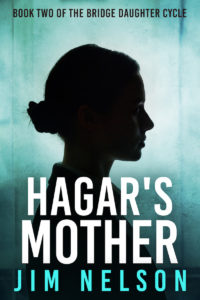
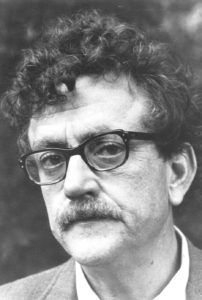
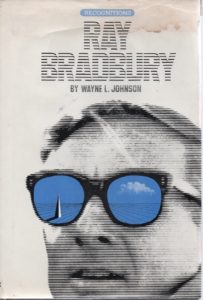
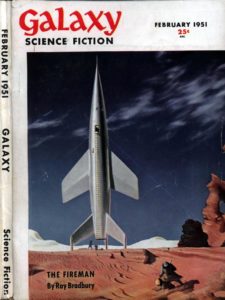
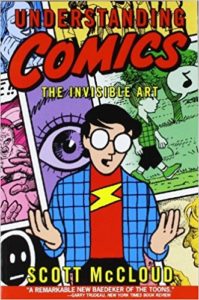 Previously I wrote glowingly on
Previously I wrote glowingly on 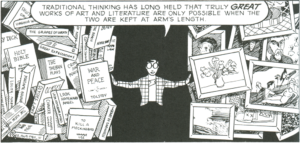
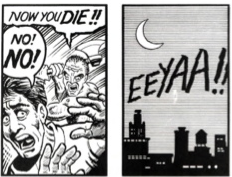
 If you think about it, chapters are an even more extreme form of visual signaling. Chapter breaks are miniature explosions in the novel’s stream-of-narration. Chapters give the writer a chance to make major shifts and signal big changes occurring, to take a deep breath before moving on with the tale. (Chapter breaks also give the reader a chance to bookmark and set aside the book. Every chapter the writer introduces is one more risk of losing their audience.)
If you think about it, chapters are an even more extreme form of visual signaling. Chapter breaks are miniature explosions in the novel’s stream-of-narration. Chapters give the writer a chance to make major shifts and signal big changes occurring, to take a deep breath before moving on with the tale. (Chapter breaks also give the reader a chance to bookmark and set aside the book. Every chapter the writer introduces is one more risk of losing their audience.)